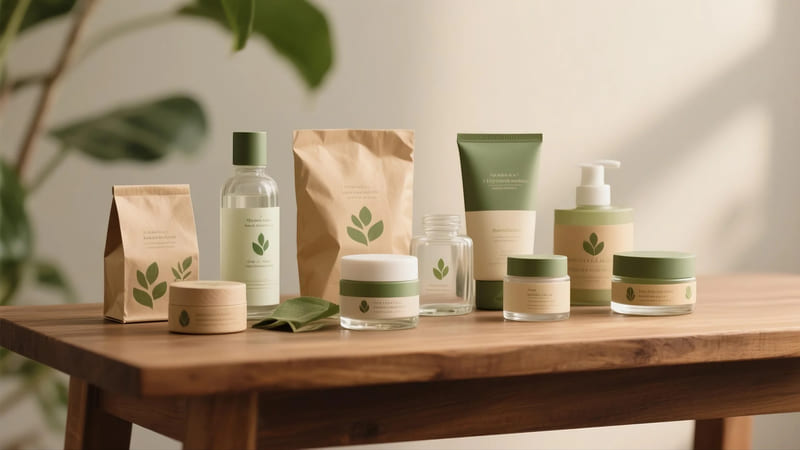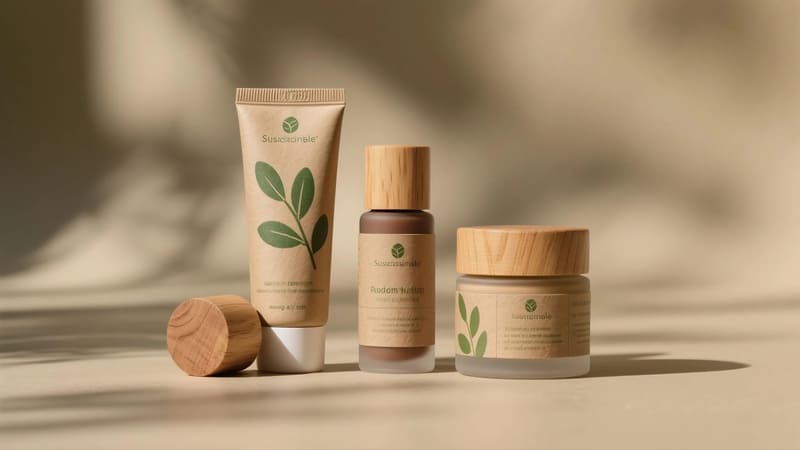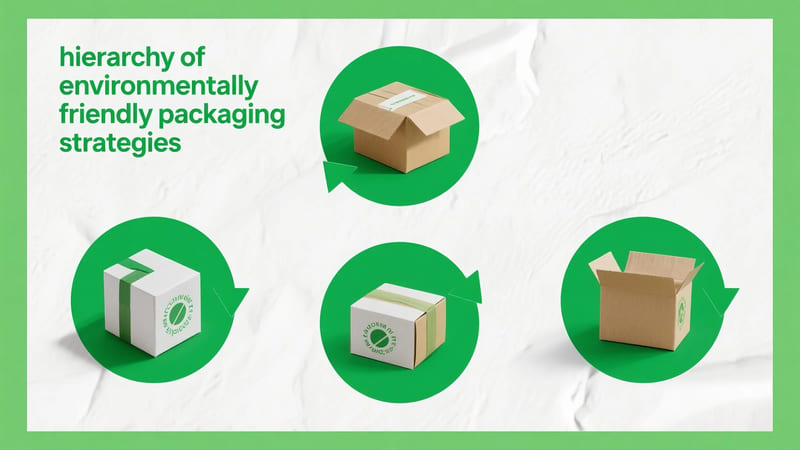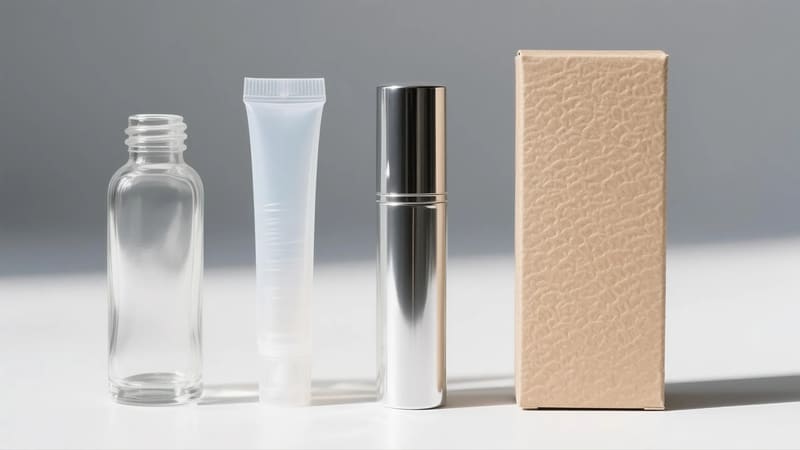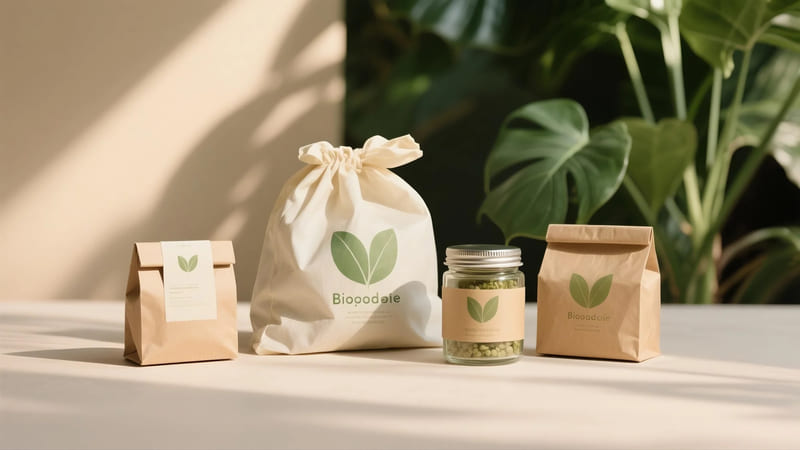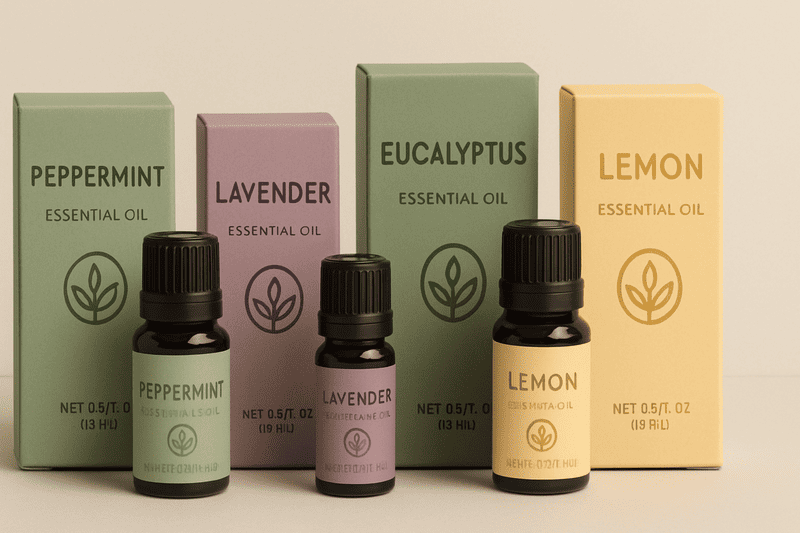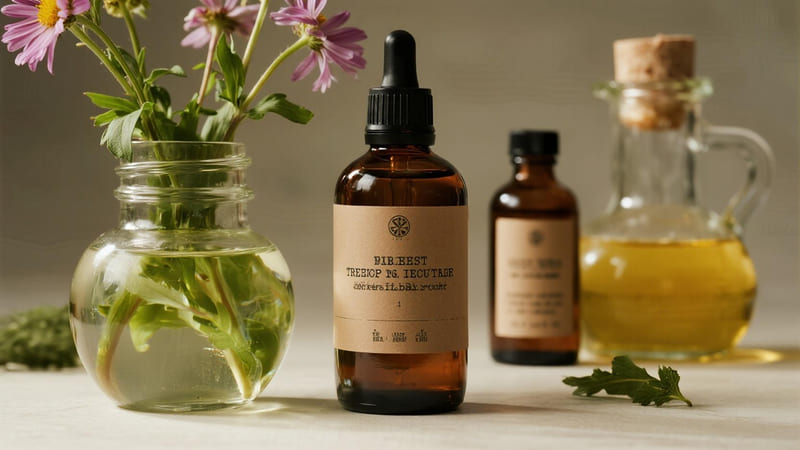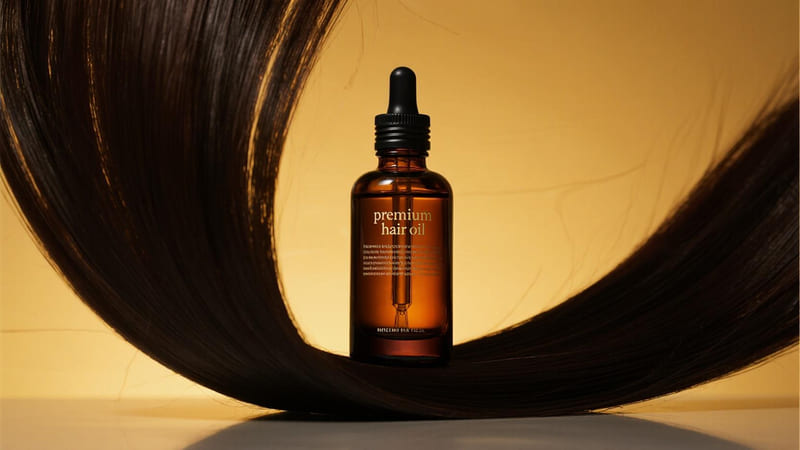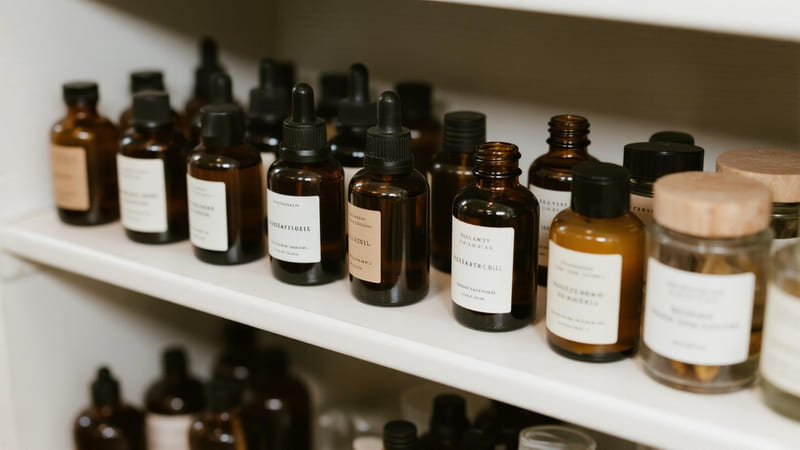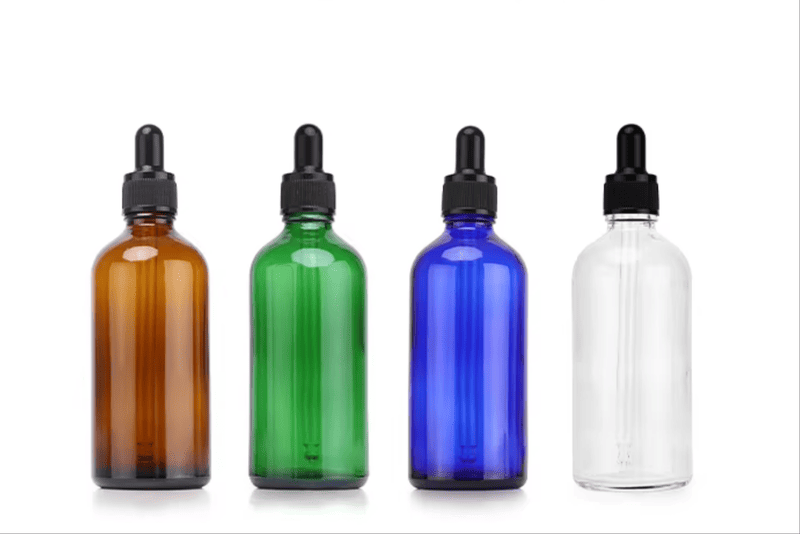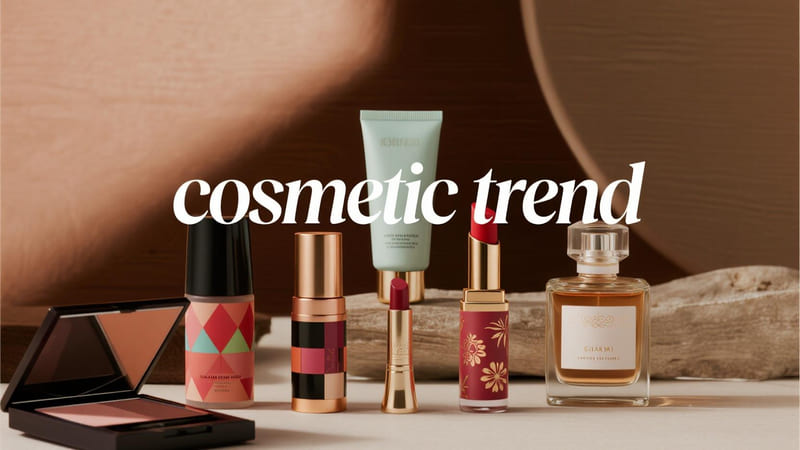In an era where sustainability is paramount, cosmetics brands are increasingly seeking packaging solutions that are kind to the planet without compromising on aesthetics or functionality. The "right" eco-friendly packaging can significantly enhance brand image and appeal to conscious consumers.
Eco-friendly packaging that suits cosmetics brands includes options like refillable systems, containers made from Post-Consumer Recycled (PCR) materials (plastic, glass, aluminum), FSC-certified paperboard for boxes, mono-material designs for easy recyclability, glass and aluminum (highly recyclable), and innovative materials like bamboo, cork, or compostable bioplastics (where appropriate infrastructure exists).
Choosing eco-friendly packaging is a statement of a brand’s values. As a global packaging manufacturer with ShineTop for over 20 years, we’ve seen a surge in demand for sustainable solutions and are committed to helping brands make responsible choices that align with their ethos and product needs. Let’s explore what suits the cosmetics industry best.
What is Eco-Friendly Packaging for Cosmetics?
"Eco-friendly packaging" in the cosmetics context refers to packaging solutions designed to minimize negative environmental impact throughout their lifecycle – from raw material sourcing to end-of-life disposal.
Eco-friendly packaging for cosmetics involves using materials and designs that reduce waste, conserve resources, and promote a circular economy. This includes utilizing recycled content, ensuring recyclability or compostability, offering refillable options, lightweighting, and sourcing materials from sustainable and renewable resources.
It’s about making conscious choices at every stage of the packaging design and production process.
Key Characteristics of Eco-Friendly Cosmetic Packaging:
-
Reduced Material Usage (Source Reduction):
- Minimalist designs that avoid unnecessary layers or components.
- Lightweighting of containers and boxes to use less raw material.
- Concentrated formulas requiring smaller packaging.
-
Recycled Content:
- PCR (Post-Consumer Recycled) Materials: Using plastics (PET, PE, PP), glass, or aluminum that have been reprocessed from consumer waste. This reduces reliance on virgin resources.
- PIR (Post-Industrial Recycled) Materials: Using waste materials from manufacturing processes.
-
Recyclability (Design for Recycling):
- Choosing materials that are widely accepted in existing recycling streams (e.g., clear PET #1, HDPE #2, glass, aluminum, paper/paperboard).
- Mono-Material Design: Using a single type of material for a component (e.g., an all-PP jar and lid) to simplify sorting and recycling.
- Avoiding problematic elements like non-recyclable laminates, certain adhesives, or dark/black plastics that can be missed by sorting sensors.
-
Refillable & Reusable Systems:
- Designing durable primary containers that consumers can refill multiple times, with refills often provided in simpler, lower-impact packaging. This is a highly effective way to reduce waste.
-
Renewable Resources:
- Using materials derived from sustainably managed renewable sources.
- Examples: FSC-certified paper/paperboard (from responsible forestry), bamboo, cork, bio-based plastics (e.g., sugarcane PE).
-
Biodegradable & Compostable Materials (with specific conditions):
- Materials designed to break down naturally under specific composting conditions (industrial or home).
- Requires appropriate disposal infrastructure and clear consumer guidance. Not a universal solution for all cosmetic products due to barrier needs and product interaction.
-
Non-Toxic Materials & Inks:
- Using materials and printing inks (e.g., soy-based or vegetable-based inks) that are free from harmful chemicals.
At ShineTop, we are actively expanding our range of eco-friendly solutions, including PCR plastics, bio-based plastics, lightweight glass, and FSC-certified paperboard, to help cosmetic brands meet these growing demands.
What Packaging is Most Environmentally Friendly?
Determining the "most" environmentally friendly packaging is complex and depends on a full lifecycle assessment (LCA), considering factors from raw material extraction to end-of-life. There’s no single "winner" for all situations.
The most environmentally friendly packaging generally follows the waste hierarchy: 1. Reduce (use less), 2. Reuse/Refill (multiple uses for one container), 3. Recycle (high recycled content & easily recyclable materials like glass, aluminum, specific plastics, paper). Compostable packaging can be beneficial if proper facilities exist and it’s suitable for the product. Lightweighting and sustainable sourcing are also key.
A holistic view is essential, rather than focusing on a single material attribute.
Hierarchy & Key Considerations for "Most Environmentally Friendly":
-
Prevention & Reduction (Top Tier):
- The greenest package is often the one that isn’t made, or uses the absolute minimum material necessary.
- Solid product formulations (shampoo bars, solid serums) that require minimal or no plastic packaging.
- Concentrated formulas needing smaller packs.
-
Reuse & Refill Systems (Very High Impact):
- Durable primary containers designed for multiple refills significantly cut down on single-use packaging waste. This is a major focus for innovative cosmetic brands.
-
Recycled Content & High Recyclability (Circular Economy Focus):
- Glass: Infinitely recyclable without loss of quality, good barrier. Heavy to transport.
- Aluminum: Highly recyclable, lightweight, excellent barrier. Energy-intensive to produce virgin aluminum, but recycling saves ~95% of that energy.
- Paper/Paperboard (FSC-certified & Recycled): Widely recyclable (if not heavily coated/laminated with plastic), renewable resource.
- Plastics (PCR PET #1, PCR HDPE #2, sometimes PCR PP #5): Using recycled plastic reduces fossil fuel demand and landfill waste. Designing for recyclability (mono-materials, clear/light colors) is crucial.
-
Compostable Packaging (Niche but Growing):
- Best For: Specific applications where the product residue might contaminate recycling streams, or where industrial/home composting is readily available and encouraged.
- Materials: Certified compostable bioplastics (PLA, PHA), molded pulp, some paper-based solutions.
- Caution: "Biodegradable" without certification is often misleading. Compostable plastics typically don’t break down in landfills or marine environments.
-
Sustainably Sourced Virgin Materials (When Recycled/Reusable isn’t Feasible):
- FSC-certified paper, bio-based plastics from non-food crop sources or agricultural waste.
The "most" environmentally friendly choice for a specific cosmetic product will depend on its formulation, protection needs, brand positioning, target market’s recycling infrastructure, and budget.
What is the Best Material for Cosmetic Packaging?
The "best" material for cosmetic packaging is a balance of product protection, brand aesthetics, user experience, cost, and increasingly, sustainability. There’s no single material that excels in all aspects for every product.
For cosmetic packaging, the "best" material depends on the specific product: Glass is excellent for luxury and inertness (serums, perfumes); Plastics (PET, PP, PE, PCR) offer versatility and light weight (lotions, cleansers, tubes); Aluminum provides superior barrier (sensitive formulas, aerosols); Paper/Paperboard (SBS, Kraft, recycled) is ideal for secondary boxes. The trend is towards sustainable versions of these.
Each material offers a unique set of properties suitable for different cosmetic applications.
Material Choices & Their Suitability for Cosmetics:
-
Glass:
- Pros: Premium feel, inert (doesn’t react with product), excellent barrier, highly recyclable, can be colored or frosted for UV protection.
- Cons: Heavy, breakable, higher energy consumption in production/transport.
- Best For: Luxury skincare (serums, creams), perfumes, foundations, nail polish.
- Eco-Angle: Choose recycled glass content; lightweighted designs.
-
Plastics (PET, PP, PE, HDPE, LDPE, Acrylic, SAN):
- Pros: Lightweight, versatile shapes, shatter-resistant, cost-effective. Different types offer varying barrier properties and aesthetics.
- Cons: Fossil fuel-derived (mostly), variable recyclability, potential for microplastic pollution if not managed well.
- Best For: Wide range – bottles for lotions/cleansers, jars for creams, tubes for gels, airless pumps.
- Eco-Angle: Prioritize PCR PET, PCR HDPE, PCR PP. Design for recyclability (mono-materials, clear/light colors). Explore bio-based plastics like Sugarcane PE. ShineTop offers many of these.
-
Aluminum:
- Pros: Lightweight, excellent barrier, highly recyclable, premium metallic look.
- Cons: Can dent, often requires internal lining for product compatibility.
- Best For: Collapsible tubes (creams, ointments), aerosol cans, tins (balms, solid perfumes), caps, decorative components.
-
Paper & Paperboard (for Secondary Packaging – Boxes):
- Pros: Excellent printability for branding, versatile structural design, lightweight, renewable (if sourced well), widely recyclable (if not overly laminated with plastic).
- Cons: Not suitable for direct contact with most liquid/cream cosmetics unless lined.
- Best For: Outer boxes for nearly all cosmetic products.
- Eco-Angle: Use FSC-certified or recycled content paperboard. Opt for soy/vegetable-based inks. Minimize plastic laminations or choose recyclable/compostable ones.
Anna, a cosmetics client of ShineTop in Thailand, uses a mix: amber glass dropper bottles for her potent serums (protection & premium feel), PCR PET bottles for her cleansers (lightweight & sustainable), and FSC-certified paperboard boxes for all her products (branding & eco-commitment).
What is the Best Eco-Friendly Packaging?
This question echoes the earlier one about "most environmentally friendly," but with a focus on actionable choices for brands seeking to be "eco-friendly."
The "best" eco-friendly packaging prioritizes the waste hierarchy (Reduce, Reuse/Refill, Recycle). This means minimalist designs using less material, robust refillable systems, and packaging made from high-recycled content materials (PCR plastic, recycled glass/aluminum, recycled paper) that are themselves easily and widely recyclable. For specific niches, certified home-compostable options can also be excellent.
"Best" in this context means making the most impactful positive choices available for your specific product and brand.
Key Strategies for "Best" Eco-Friendly Packaging for Cosmetics:
-
Embrace Refillable Models:
- This is often the most impactful. Design beautiful, durable primary containers that customers love and want to keep, then offer refills in lightweight, minimal packaging (e.g., recyclable pouches, small glass vials, or solid product refills).
- Example: A luxury glass serum bottle with a refillable inner cartridge.
-
Maximize Recycled Content (PCR):
- For plastics, aim for high percentages of PCR PET, HDPE, or PP. This creates demand for recycled materials and reduces virgin plastic use.
- Use recycled glass and aluminum where possible.
- For paperboard boxes, specify high PCR content or 100% recycled board.
-
Design for Recyclability (Circularity):
- Mono-Materials: Make it easy for recycling facilities. If a bottle, cap, and label are all PET, it’s much better than mixed plastics.
- Easy Disassembly: If different materials must be used, can they be easily separated by the consumer?
- Avoid Problematic Elements: Minimize use of non-recyclable laminates, hard-to-remove adhesives, carbon black pigment in plastics, and very small components that get lost in sorting.
-
Choose Widely Recyclable Base Materials:
- Clear PET (#1), Natural HDPE (#2), Glass, Aluminum, Paper/Paperboard are generally good starting points.
-
Lightweighting & Minimalism:
- Use only the material necessary for protection and branding. Eliminate unnecessary layers or overly large packaging.
-
Consider Innovative Sustainable Materials (with due diligence):
- Bamboo, cork, hemp-based materials, molded pulp, or certified compostable bioplastics can be excellent for certain applications if their lifecycle and end-of-life are well understood and managed.
- Example: A CBD balm in a bamboo jar with a compostable inner lining, housed in a hemp paper box.
-
Clear Consumer Communication:
- Use on-pack labeling (e.g., How2Recycle) to clearly instruct consumers on how to dispose of or recycle each component.
Mohammed, my client from Iraq who focuses on luxury gift sets, is now exploring options for high-end rigid boxes made with recycled greyboard and wrapped in FSC-certified specialty papers, with custom molded pulp inserts instead of foam. This shows that luxury and eco-friendliness can go hand-in-hand.
Conclusion
Cosmetics brands have a growing array of eco-friendly packaging options that can align with their values and appeal to conscious consumers. The best choices prioritize reducing material use, embracing refillable systems, maximizing recycled content, and ensuring easy recyclability. By thoughtfully selecting materials like PCR plastics, glass, aluminum, sustainable paperboards, or innovative alternatives like hemp and bamboo, brands can create beautiful, functional, and responsible packaging that benefits both their business and the planet.

